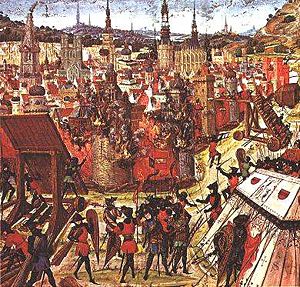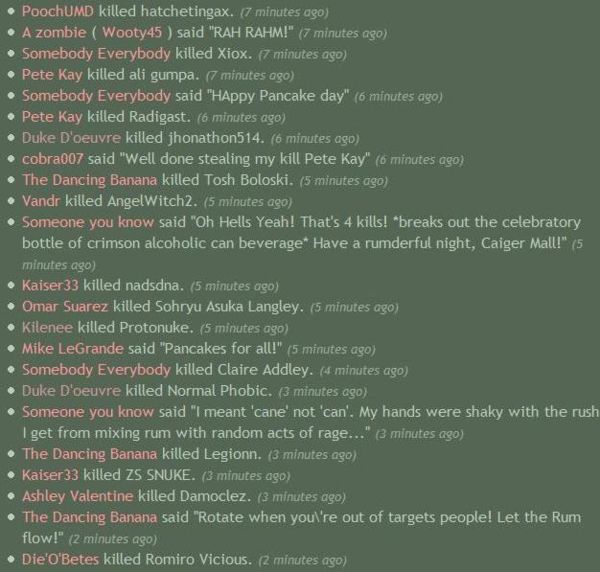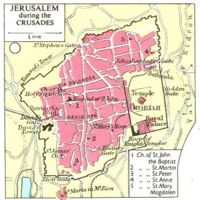Red Rum/Siege of Jerusalem: Difference between revisions
m (fixing link) |
m (Protected "Red Rum/Siege of Jerusalem": Historical Group ([edit=sysop] (indefinite) [move=sysop] (indefinite))) |
(No difference)
| |
Latest revision as of 11:11, 29 April 2012
| Siege of Jerusalem | |||||||||||||
|---|---|---|---|---|---|---|---|---|---|---|---|---|---|
| Date | 3rd December 2007, 23:30 GMT | ||||||||||||
| Place | |||||||||||||
| Result | Total elimination of every survivor in the Upper-Left Corner, and half the survivors in the Lower-Left Corner (by PKers); Total elimination of almost every survivor in the mall (by zombies) | ||||||||||||
| |||||||||||||
Background
After the successful siege of Antioch in June of 1098, the crusaders remained in the area for the rest of the year. The papal legate Adhemar of Le Puy had died, and Baldwin of Boulogne remained in Edessa, captured earlier in 1098. There was dissent among the princes over what to do next; Raymond of Toulouse, frustrated, left Antioch to capture the fortress at Ma'arrat al-Numan. By the end of the year the minor knights and infantry were threatening to march to Jerusalem without them.
Procession to Jerusalem
Continuing south along the coast, the crusaders passed Beirut, Tyre, and turning inland at Jaffa, captured Ramlah. Godfrey sent Tancred and Gaston to capture Bethlehem, where Tancred flew his banner from the Church of the Nativity. Finally the crusaders reached Jerusalem itself. Many cried upon seeing the city they had journeyed so long to reach.
Faced with a seemingly impossible task, their spirits were raised when a priest by the name of Peter Desiderius claimed to have a divine vision in which the ghost of Adhemar instructed them to fast for three days and then march in a barefoot procession around the city walls, after which the city would fall in nine days, following the Biblical example of Joshua at the siege of Jericho. Although they were already starving, they fasted and made the procession, with the clergy blowing trumpets and singing psalms, being mocked by the defenders of Jerusalem all the while. The procession stopped on the Mount of Olives and sermons were delivered by Peter the Hermit, Arnulf of Chocques, and Raymond of Aguilers.
The Final Assault and Massacre
Once the crusaders had breached the outer walls and entered the city, almost every inhabitant of Jerusalem was killed over the course of that afternoon, evening and next morning. According to one famous account in Gesta, "...the slaughter was so great that our men waded in blood up to their ankles..." According to Raymond of Aguilers "men rode in blood up to their knees and bridle reins."
The Gesta Francorum states some people managed to escape the siege unharmed. Its anonymous author wrote, "[Our leaders] also ordered all the Saracen dead to be cast outside because of the great stench, since the whole city was filled with their corpses; and so the living Saracens dragged the dead before the exits of the gates and arranged them in heaps, as if they were houses. No one ever saw or heard of such slaughter of pagan people, for funeral pyres were formed from them like pyramids, and no one knows their number except God alone."
Aftermath
Following the massacre, Godfrey of Bouillon was made Advocatus Sancti Sepulchri (Protector of the Holy Sepulchre), refusing to be named king in the city where Christ had died, saying that he refused to wear a crown of gold in the city were Christ wore a crown of thorns. Raymond refused any title at all. The siege quickly became legendary and in the 12th century it was the subject of the Chanson de Jérusalem, a major chanson de geste in the Crusade cycle.



